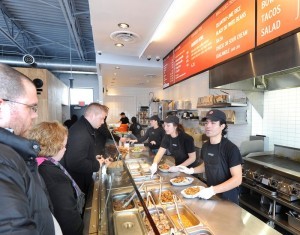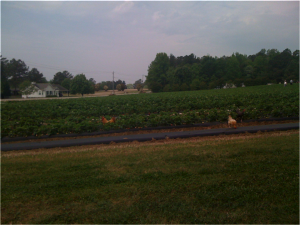As norovirus was confirmed at a Boston-area Chipotle (marking the 5th confirmed outbreak in the past 6 months), Chipotle officials took the airwaves to talk about how they plan on responding.
Phil Wahba of Fortune writes that cases linked to a Cleveland Circle Chipotle have climbed to 120.
Boston College said Wednesday the number of students suffering from symptoms consistent with the Norovirus is now 120, up from an estimate of 30 earlier this week. The school said, “Nearly all cases are related to students who ate at the Chipotle restaurant in Cleveland Circle” last weekend. Chipotle has temporarily closed that location.
According to Nation’s Restaurant News, Chipotle plans on doing some radical things (although they have yet to reveal the details of what their new standards are).
In a presentation to Wall Street analysts at the annual Bernstein Consumer Summit in New York, officials with the Denver-based chain laid out a plan for improving food safety that they contend will put Chipotle 10 to 20 years ahead of industry norms.
“We have this desire to be the safest place to eat,” said Steve Ells, Chipotle chairman, founder and co-CEO.
Meanwhile, Chipotle is investing heavily in food safety with new protocols that will include more testing of fresh produce.
Just as suppliers are asked to meet certain standards under the chain’s Food With Integrity mission, produce suppliers will be held to higher standards in terms of food safety, Ells said.
“There will be robust testing procedures that will need to be in place for all of our suppliers, whether large or small,” he said. “Some of the smaller suppliers might have a hard time implementing these robust testing procedures initially. We’ll help them. Not all will be on board, for sure, but we think most will.”
But, because “it’s impossible to test every tomato,” the chain is taking additional operational steps, Ells said.
For example, Chipotle has begun dicing tomatoes in a commissary, putting them through a “sanitary kill step” to eliminate pathogens, and hermetically sealing them for delivery to restaurants.
I’m interested in what this sanitary kill step is, and what data they have that validates it. Is it a 5- or 7-log reduction kill step? Or a 1- to 2-log reduction one?
The PR world is analyzing Chipotle’s communications reresponse and according to CNBC, they aren’t doing great.
“They’re not going far enough,” Gene Grabowski, who runs the crisis group at kglobal, told CNBC. “They’re not painting pictures with their words,” he said. “They’re still doing too much explaining.”
They aren’t really explaining enough what they actually plan – paint the picture of a company that has a good food safety culture, and implement it.
In related news, Chipotle stocks continue to fall, but have no fear, significant traffic driving initiatives (whatever those are) will bring the people back.
In a report published Wednesday, Sara Senatore of Bernstein maintained a bullish stance on Chipotle’s stock even though she acknowledged that Chipotle’s brand has been “diminished” following the recent E. coli outbreak. However, the analyst noted that once the CDC gives the “all clear,” the company should benefit from “significant traffic driving initiatives.
Senatore said Chipotle is likely to initiate a series of initiatives including an up-tick in “traditional marketing,” including social media outreach and direct mail – which may consist of buy-one-get-one free offers and other discounting that have “proven very effective” for the company in the past. Naturally, these initiatives will result in gross margin pressure in the near term, but margin recovery should “materialize over time” as management realizes efficiencies and benefits from improvements in technology and throughput.
Here’s a significant Traffic driving initiative for you.


 n California
n California






